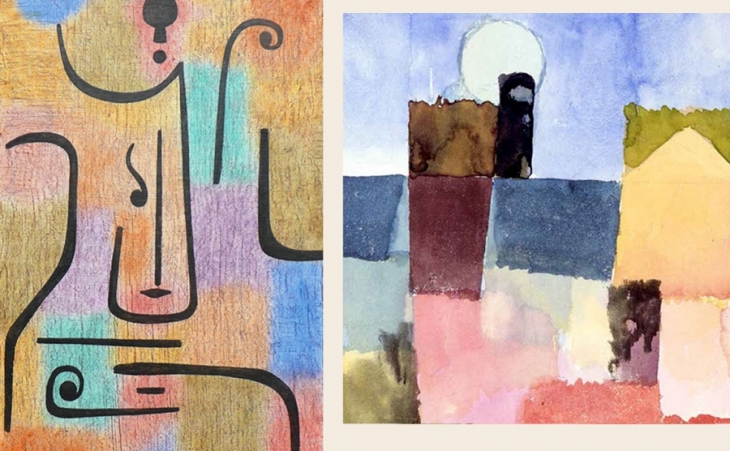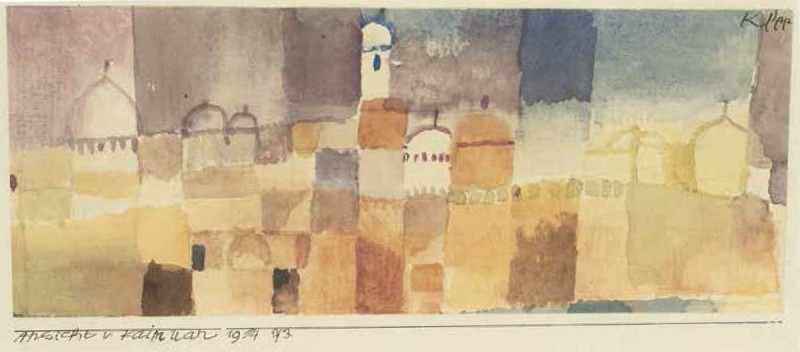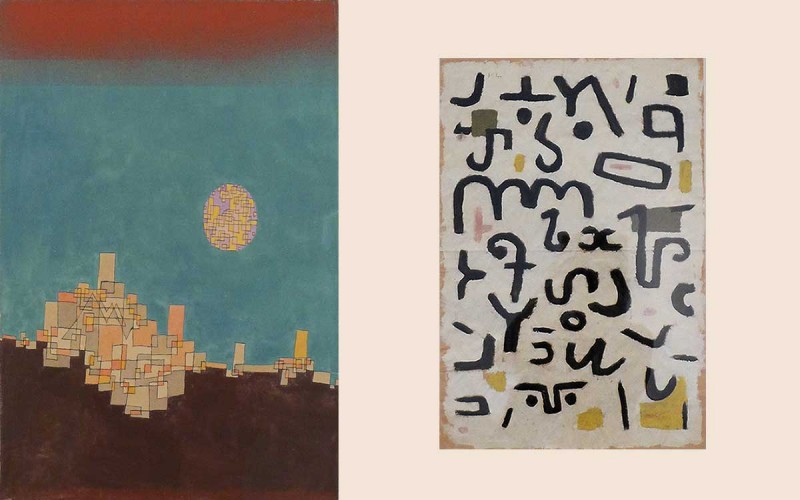
Paul Klee, one of the great pioneers of XXth century art, found his true calling of painter during his trip to Tunisia in 1914.
It was in front of Kairouan’s walls that the painter Paul Klee had this epiphany: “Color and I are one. I am a painter”. At that time, he was still seeking his way as a man and as an artist. Right after this revelation, he shortened his stay and went back to Europe to paint.Paul Klee was born in Switzerland; his father was German. He visited Tunisia in spring 1914, along with painters August Macke and Louis Moilliet. He was back then convinced of having “oriental” roots from his mother, originating from Provence. The discovery of Tunisia deeply marked him: “Home?”, he wrote in his travel diary.
Kairouan, 1914


His first sight, when he arrived by boat, was of the village of Sidi Bou Saïd: “Strictly rhythmic white architecture… the fairy tale come true”. Later, he told the story of a fascinating full-moon night in Saint-Germain (today Ezzahra) near Tunis: “This evening is deep inside me forever”. What also struck him was the bareness of architecture and landscapes: “There is a great serenity all around you”.
For all his life, Paul Klee would paint very small formats which are similar to miniature art. His paintings sometimes represent imaginary towns with broken lines, nocturnal sceneries which look full of all the poetry of tales. Or mysterious signs – isolated letters, arrows, broken lines – as an echo to the art of calligraphy or to Berber symbols that he might have discovered during his trip.
The story of Paul Klee’s trip to Tunisia is not the one of a superficial inspiration, but of a deep and lasting impregnation. It is the story of a joyful encounter between a Northern painter and a Southern country in which he recognized himself.
Top: Erzengel, 1938; Moonrise (Saint-Germain), 1915